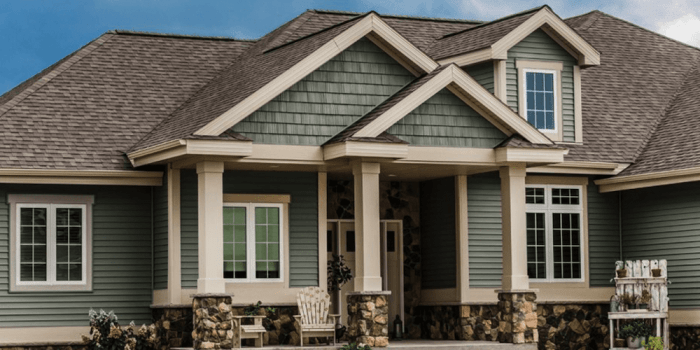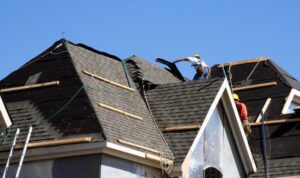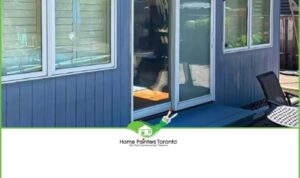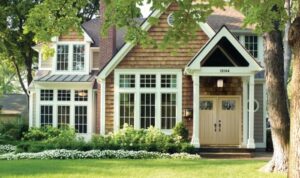Delving into the world of house siding options, this guide offers a detailed look at the best choices available, uncovering key insights and considerations for homeowners.
From exploring different materials to cost factors and environmental impacts, this guide covers it all to help you make an informed decision for your home.
Types of House Siding
When it comes to house siding, there are several materials to choose from, each with its own unique characteristics and benefits.
Vinyl Siding
Vinyl siding is a popular choice due to its affordability and low maintenance requirements. It is durable, resistant to rot and insects, and comes in a wide range of colors and styles.
Wood Siding
Wood siding offers a natural, rustic look that many homeowners love. While it requires more maintenance than vinyl, with proper care, it can last for decades. However, it is susceptible to rot, pests, and moisture damage.
Fiber Cement Siding
Fiber cement siding is a versatile option that combines the look of wood with the durability of cement. It is resistant to fire, insects, and rot, making it a low-maintenance choice. However, it can be more expensive than vinyl or wood siding.
Metal Siding
Metal siding, such as aluminum or steel, is known for its strength and durability. It is resistant to rot, insects, and fire, making it a long-lasting option. However, it can dent easily and may require repainting over time.Each type of siding has its own pros and cons when it comes to durability, maintenance, and cost.
Consider your priorities and budget when choosing the best option for your home.
Cost Considerations
When it comes to choosing house siding options, cost is a significant factor to consider. The initial investment for different types of siding can vary widely, and it's essential to understand the long-term cost implications as well.
Cost Differences Between Siding Options
- Vinyl siding is often the most cost-effective option, with lower upfront costs compared to materials like wood or fiber cement.
- Fiber cement siding tends to fall in the mid-range in terms of cost, offering a balance between affordability and durability.
- Wood siding, while aesthetically pleasing, can be one of the more expensive options due to the cost of materials and maintenance.
Long-Term Cost Savings
- While vinyl siding may have a lower initial cost, it may require more frequent replacement or maintenance over time, potentially increasing long-term costs.
- Fiber cement siding, on the other hand, is known for its durability and low maintenance requirements, potentially leading to cost savings in the long run.
- Wood siding, despite its higher upfront cost, can also be a cost-effective option if properly maintained and protected from the elements.
Factors Affecting Installation Costs
- Size of the house: Larger homes will require more materials and labor, leading to higher installation costs.
- Complexity of the design: Intricate designs or architectural details can increase labor costs during installation.
- Location: Labor costs can vary depending on the region and accessibility of the property.
Aesthetics and Design

When it comes to house siding, aesthetics and design play a crucial role in enhancing the overall look of a home. The choice of siding material, color, and finish can greatly impact the curb appeal and architectural style of a house
Enhancing Curb Appeal
Different siding materials offer unique textures and patterns that can enhance the curb appeal of a house. For example, wood siding provides a natural and warm look, while vinyl siding offers a clean and modern aesthetic. It's essential to consider how the siding material will complement the architectural features of the house to create a cohesive and visually appealing exterior.
Popular Color Choices and Finishes
When selecting house siding, homeowners have a wide range of color choices and finishes to choose from. Neutral colors like white, beige, and gray are timeless options that can suit various architectural styles. Bold colors like blue, green, or red can add a pop of personality to a home's exterior.
Additionally, textured finishes like wood grain or smooth finishes can further enhance the visual appeal of the siding.
Selecting Siding to Complement Architectural Styles
It's important to choose siding that complements the architectural style of the house. For example, traditional homes often pair well with brick or wood siding, while modern and contemporary houses may benefit from metal or fiber cement siding. Consider the color, texture, and design elements of the siding to ensure it enhances the overall aesthetic of the home.
Environmental Impact
When choosing house siding materials, it is essential to consider their environmental impact. Some materials are more eco-friendly and sustainable than others, making them better choices for those looking to reduce their carbon footprint.
Wood Siding
Wood siding is a popular choice for its natural and renewable properties. However, the sustainability of wood siding depends on the source of the wood. Opting for reclaimed or certified sustainable wood can help minimize environmental impact.
Fiber Cement Siding
Fiber cement siding is known for its durability and low maintenance requirements. While it is not as natural as wood, fiber cement is made from sustainable materials like sand, cement, and cellulose fibers, making it a greener alternative.
Vinyl Siding
Vinyl siding, although cost-effective and easy to maintain, has a negative environmental impact due to its manufacturing process and non-biodegradable nature. It releases toxic chemicals when produced and disposed of, making it less eco-friendly compared to other options.
Metal Siding
Metal siding, such as steel or aluminum, is durable and recyclable, making it a more sustainable choice. However, the energy-intensive production process of metal siding can offset its eco-friendly benefits.
Tips for Environmentally Conscious Choices
- Opt for sustainable or reclaimed wood siding to minimize environmental impact.
- Choose fiber cement or metal siding, which are recyclable and have lower carbon footprints.
- Avoid vinyl siding due to its negative environmental impact and non-biodegradable nature.
- Consider the longevity and maintenance requirements of the siding material to reduce waste and promote sustainability.
End of Discussion
In conclusion, understanding the nuances of house siding options can greatly impact the aesthetics, durability, and eco-friendliness of your property. Armed with this knowledge, you're now ready to choose the best siding that suits your needs and style.
FAQ Explained
What factors should I consider when choosing house siding?
When choosing house siding, consider factors like durability, maintenance requirements, cost, aesthetics, and environmental impact.
Is vinyl siding more durable than wood siding?
Vinyl siding is generally considered more durable than wood siding as it is resistant to rot, pests, and moisture.
How can I enhance the curb appeal of my house with siding?
You can enhance curb appeal by choosing siding colors and finishes that complement your home's architectural style and landscaping.
Are there environmentally friendly siding options available?
Yes, materials like fiber cement and certain types of wood siding are considered more eco-friendly due to their sustainability and recyclability.






